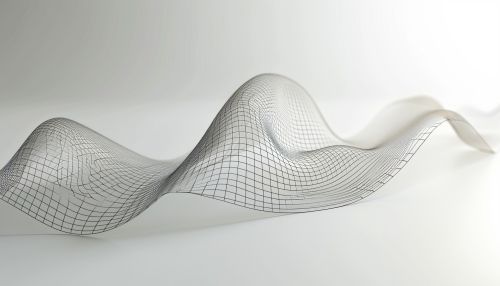Riemann integral
Introduction
The Riemann integral, named after German mathematician Bernhard Riemann, is a fundamental concept in the field of mathematical analysis, a branch of pure mathematics concerned with the behavior of mathematical functions and sequences. The Riemann integral is one of the simplest ways to assign a number to a function in a way that measures the total "output" of the function over a certain interval.


Definition
The Riemann integral is defined for a function of one real variable over a closed interval. The definition begins by dividing the interval into a finite number of subintervals, then choosing a point within each subinterval. The function is evaluated at these points, and these values are used to compute an approximation to the integral. The Riemann integral is then defined as the limit of these approximations as the size of the subintervals approaches zero.
Formal Definition
Let f be a real-valued function defined on a closed interval [a, b]. A partition P of [a, b] is a finite sequence of numbers of the form
a = x_0 < x_1 < x_2 < ... < x_n = b
Each x_i is called a partition point, and the interval [x_{i-1}, x_i] is called a subinterval of the partition. A tagged partition P of [a, b] is a partition together with a finite sequence of numbers t_i, where each t_i lies in the subinterval [x_{i-1}, x_i].
The Riemann sum of f with respect to the tagged partition P is defined as
S(P, f) = Σ_{i=1}^{n} f(t_i) (x_i - x_{i-1})
The Riemann integral of f over [a, b] is then defined as the limit of the Riemann sums as the mesh of the partition goes to zero, if this limit exists. The mesh of a partition is defined as the length of the longest subinterval.
Properties and Theorems
The Riemann integral has many properties that make it useful in mathematical analysis. These include linearity, monotonicity, additivity over intervals, and the fundamental theorem of calculus.
Linearity
The Riemann integral is linear, meaning that for any two functions f and g and any two real numbers α and β,
∫ (αf + βg) = α ∫ f + β ∫ g
Monotonicity
If f and g are two functions such that f(x) ≤ g(x) for all x in [a, b], then
∫ f ≤ ∫ g
Additivity over Intervals
If c is any number in the interval [a, b], then
∫ f = ∫_a^c f + ∫_c^b f
Fundamental Theorem of Calculus
The Fundamental Theorem of Calculus connects differentiation and integration. It states that if f is a real-valued function that is integrable on [a, b] and F is an antiderivative of f on [a, b], then
∫ f = F(b) - F(a)
Limitations and Extensions
While the Riemann integral is a powerful tool, it has limitations. For example, it cannot integrate functions with unbounded variation or functions that are not defined everywhere. To overcome these limitations, mathematicians have developed more general theories of integration, such as the Lebesgue integral and the Henstock-Kurzweil integral.
